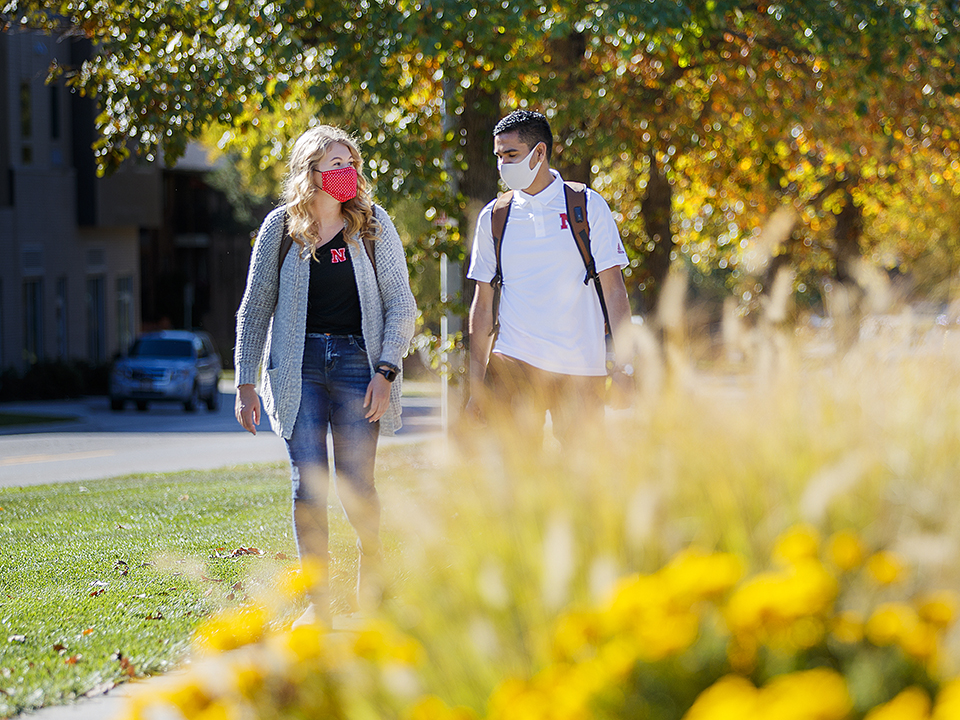
Winter break is a time when many students look forward to reconnecting with family and friends they may not have seen while away at school. However, communicating with your student and coming up with a plan for how to reduce the risk of COVID-19 to your family should start now.
Your plan should have 3 W’s: wearing masks, watching your distance, washing your hands and 3 C’s: avoiding crowds, close contact and confined spaces. And, these are not just for your student, they are for you and anyone you plan to have together at your home for Thanksgiving or other small get-togethers.
Always wearing a mask when around anyone that is not from your own household is the number one way to reduce the risk of COVID-19. Combine this with avoiding crowds – no parties, going to bars, or group events or activities – to create a solid defense against COVID-19. Then add watching your distance – avoid close contact by keeping 6 feet of distance from others that do not live in your home, and avoid confined spaces, such as being indoors in enclosed spaces with poor ventilation. Finally, wash your hands frequently. The 3 W’s and 3 C’s give you a solid plan to prevent illness in your family. If both you and your student follow this plan for two weeks before your student returns home, the risk of COVID-19 in your home will be very low.
Ask your student to reduce their social interactions for two weeks prior to coming home. And, make sure everyone realizes that socializing will need to look different this year when your student returns home. To prevent spreading COVID-19, in-person social contact should be limited.
With each personal interaction potentially increasing the spread of COVID-19, every interaction needs to be thoughtful and intentional. Family members should continue to exercise caution in their socialization to protect one another.
If any family or household member is considered high-risk, typically those who are older adults or have pre-existing medical conditions, all household members should take additional precautions by wearing face coverings and maintaining 6 feet of distance even within the home.
Before your student arrives home, it’s important that your household discuss their risk tolerance level and what types activities are acceptable. Below are some examples of how to socialize depending on your risk tolerance.
LOW RISK
• Embrace digital connections. Hosting a Zoom coffee to catch up with friends or family bears minimal risk. As long as you participate from home by yourself a mask isn’t even necessary!
MORE RISK
• Build a bubble. Ask your student to only get together with only a couple of individuals who they most want to reconnect with during your time at home. Limiting interactions, meeting outdoors, and taking precautions like wearing a face covering and maintaining 6 feet of distance will help prevent virus spread.
HIGHER RISK
• Re-enter the home environment. While it may seem most natural to remove masks and not worry about distancing around your household, this carries a higher risk. This risk can be lowered by carefully following the 3 W’s and 3 C’s for two weeks before your student comes home.
HIGHEST RISK
• Attending one-off get-togethers or large gatherings. If your student has a large social circle at home it may seem difficult to limit interactions, but this is key to reducing the risk of transmission of COVID-19 in your family. Mixing households and potentially students from many regions carries an increased likelihood of infection. These types of events are not recommended.
Keep in mind that risk levels are different in each community, and it’s important to familiarize yourself with local conditions and directed health measures to keep your household safe. As always, encourage the 3 W’s: Wear a face covering. Watch your distance. Wash your hands. And the 3 C’s: Avoid crowds, close contact and confined spaces.